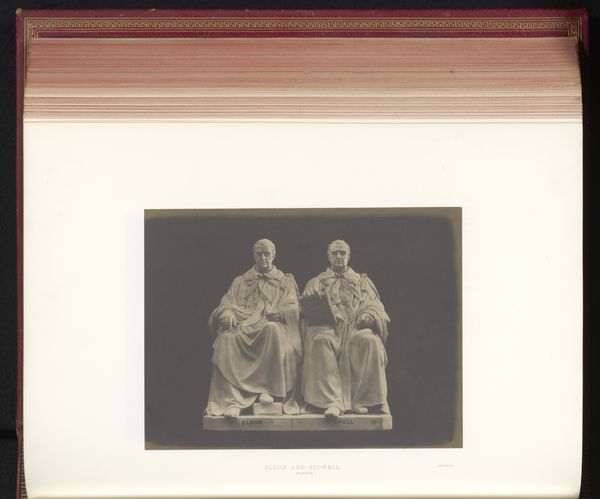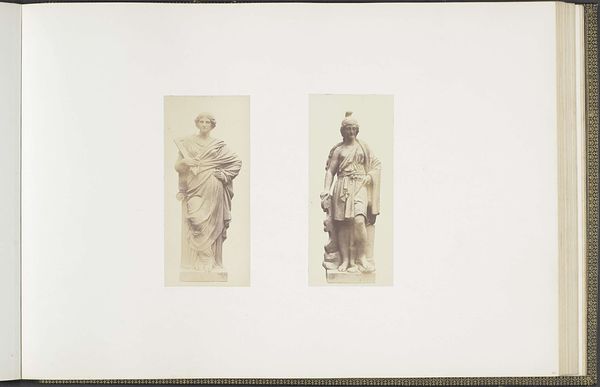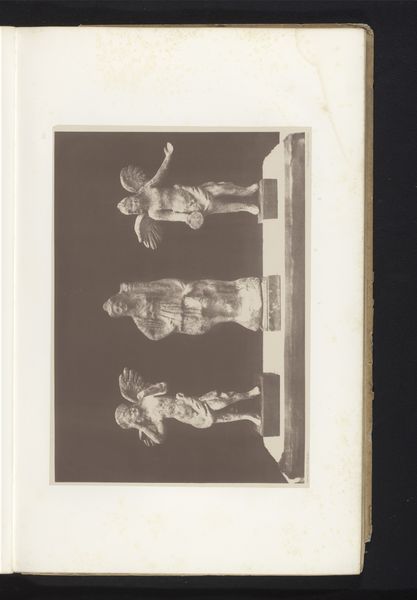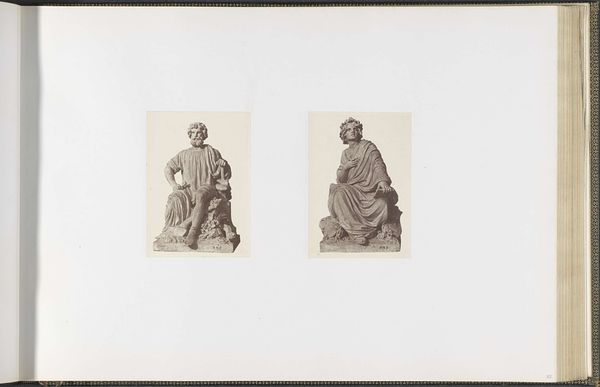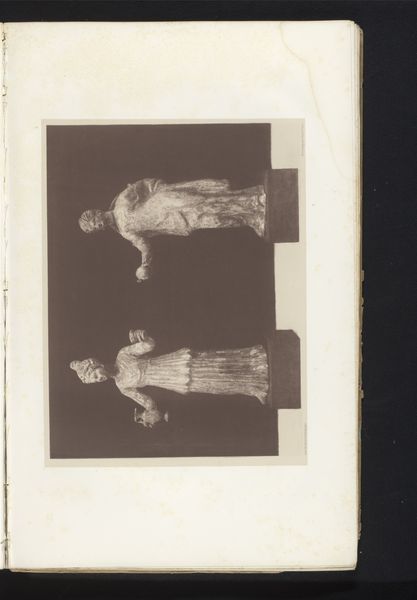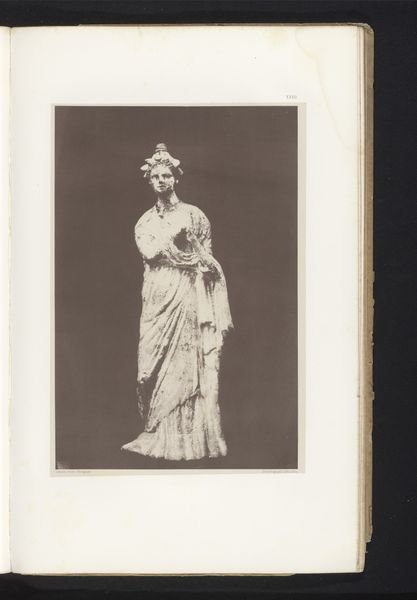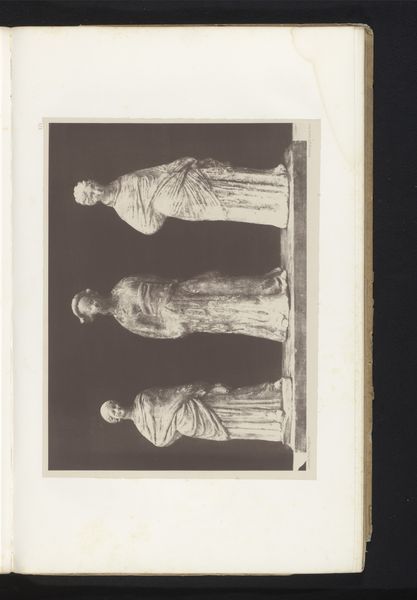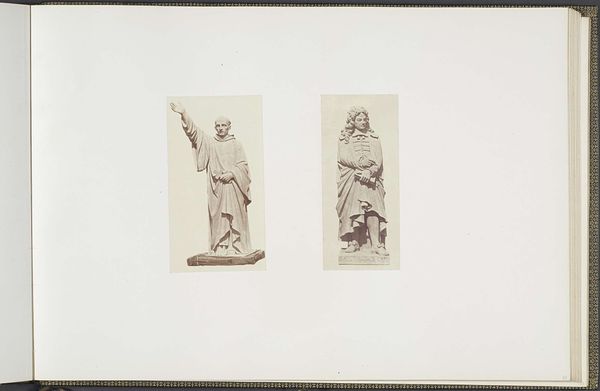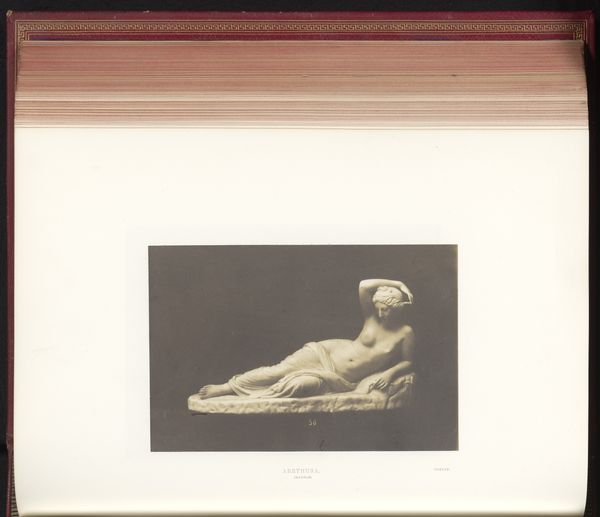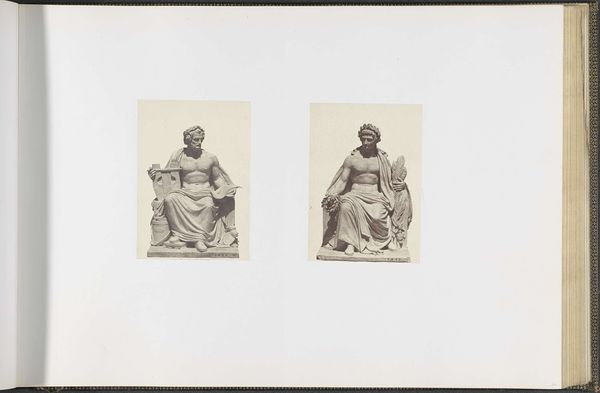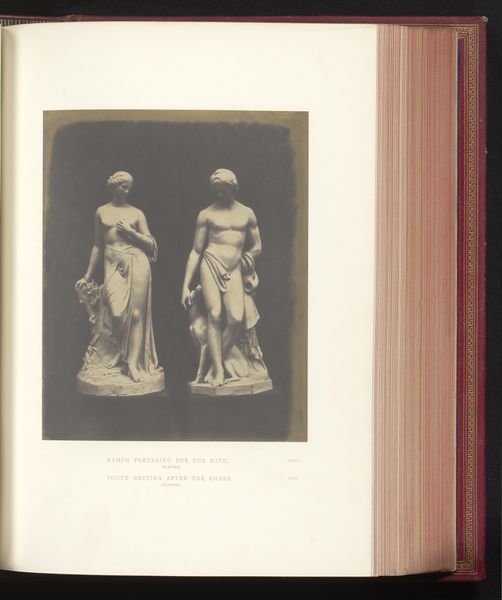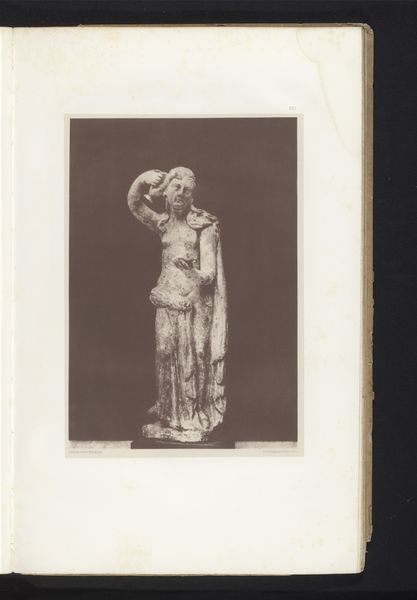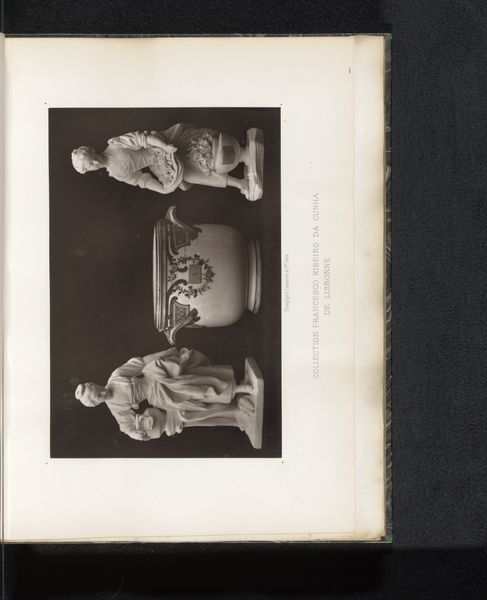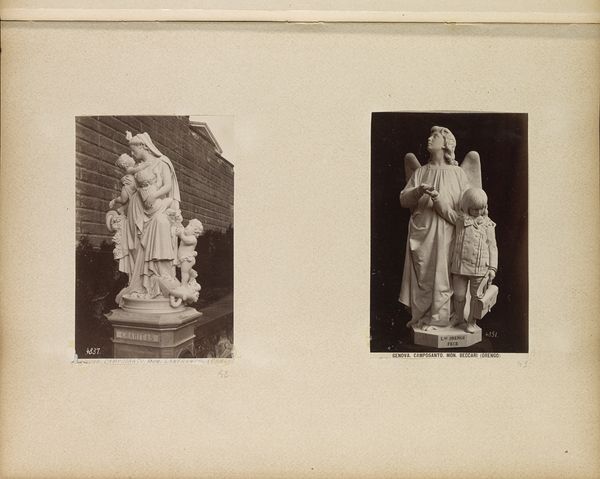
Twee bronzen bustes door Charles Cordier tentoongesteld op de Great Exhibition of the Works of Industry of All Nations van 1851 in Londen 1851
0:00
0:00
mixed-media, bronze, photography, sculpture
#
portrait
#
african-art
#
mixed-media
#
bronze
#
photography
#
sculpture
#
portrait art
Dimensions: height 147 mm, width 196 mm
Copyright: Rijks Museum: Open Domain
Here is Hugh Owen's photograph of Charles Cordier's bronze busts displayed at the Great Exhibition in London, 1851. The Great Exhibition was a stage for empires, showcasing industrial achievements alongside ethnographic displays that often exoticized and othered non-European peoples. Cordier, an enthralled ethnographer, sought to capture the "beauty" of the "races" in his sculptures, attempting to classify humanity through art. Yet, Cordier's work also reveals the complexities of representation during an era of colonialism and scientific racism, and the way it affected gender. These busts, while intending to immortalize the sitters, also highlight the power dynamics inherent in the act of portrayal, revealing the artist's perception and the aesthetic preferences of the time. They exist as both artistic creations and as historical documents, reflecting the entangled histories of art, science, and colonialism.
Comments
No comments
Be the first to comment and join the conversation on the ultimate creative platform.
